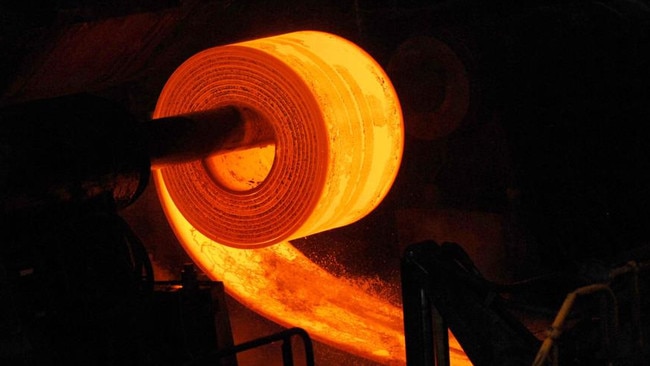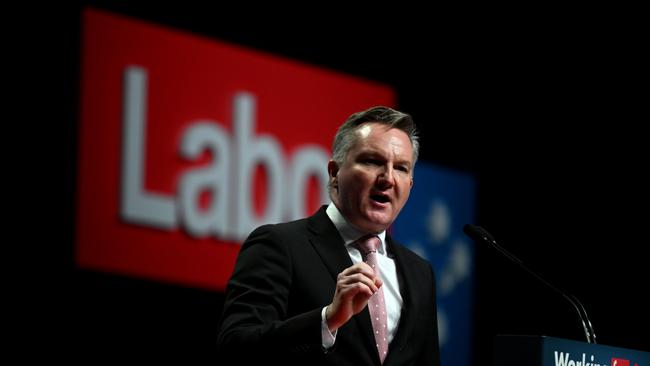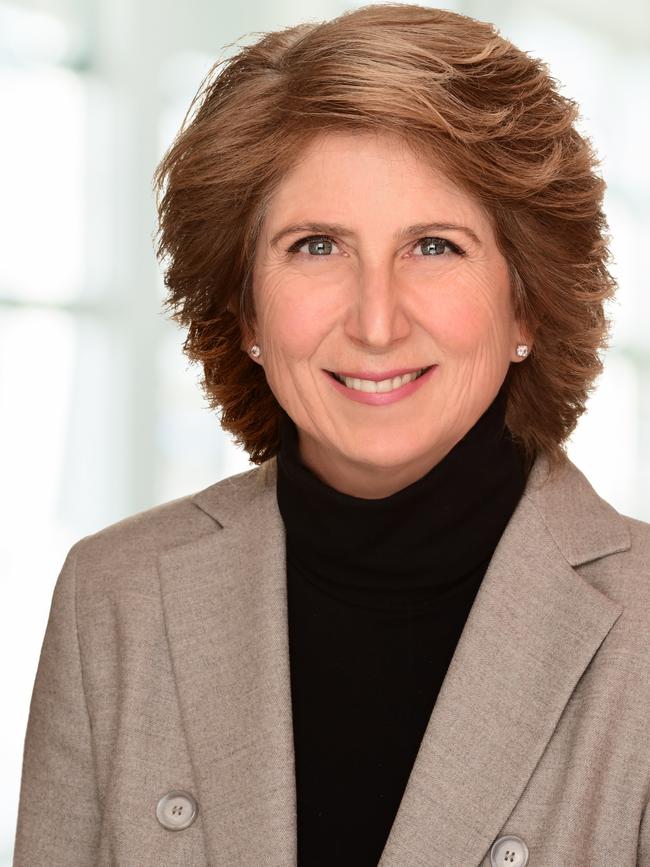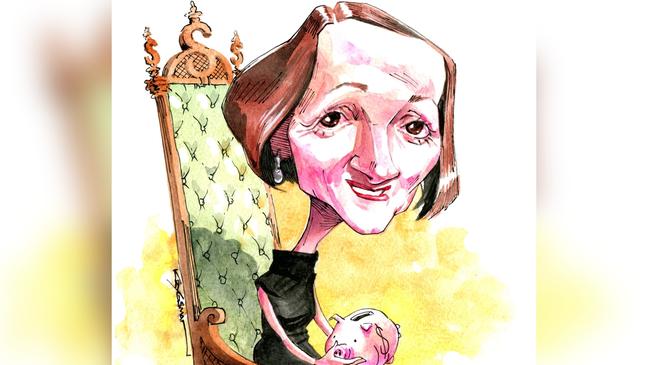
The bootlegger concept, developed by US economist Bruce Yandle, explains how economics and ethics meet, and in this case the baptist might think banning alcohol is good for society in general but the bootlegger is the biggest beneficiary because he or she gets to charge more for illicit liquor sales.
EY Sustainability chief Matthew Nelson supports the concept of border adjustment measures for carbon because the more countries that apply it, the closer we will come to a global carbon price.
The momentum is certainly running in this direction.

The idea being if monopoly steelmaker BlueScope sells steel for $1500 a tonne, of which $250 is due to carbon costs, then any imported steel from a country that doesn’t impose carbon costs will be hit with a $250 duty on its steel landing in Australia.
BlueScope thinks it’s a great idea because it tends to avoid so-called carbon leakage, but unstated is one more way of controlling imports, which are anathema to the company.
As an aside, BlueScope, which just a couple of years was importing steel from its Vietnam plant because it couldn’t meet demand, is now exporting surplus steel, which tells you how demand has collapsed in Australia.
New chair Jane McAloon’s welcome appointment puts the Energy Australia chair and former senior BHP executive at the helm at a pivotal time, including the selection of chief Mark Vassella’s replacement, given he is close to six years in the job.
Vassella has opened all the right doors for BlueScope on the conversion to green steel, including joint projects with Rio on direct reduced iron production and MOUs with industry leaders including Posco, Thyssen Krupp and Tata.
But the pragmatic Vassella still figures that commercial green steel is a while off.
BlueScope’s own partnership deals highlight the complexity in Bowen’s proposal.
As a trade-exposed high emitter, BlueScope has some concessions in the proposed safeguards mechanism, which forces companies to wind back emissions.
This is high-priority work for Vassella and his sustainability chief, Greta Stephens, who joined the company two years ago after a 27-year career in the aluminium trade.

Bowen’s carbon tariff follows similar musings in the US and Japan and concrete moves in the EU, which has begun its test phase requiring importers of certain products to declare carbon emissions and any taxes paid in the country of origin.
Steel and cement are relatively easy to measure but more complex equations are required for elaborately manufactured products such as computers.
Given the difficulties the Australian Dumping Commission has in working out normal values in exporting countries today, carbon raises new complexities, including how it would marry with the domestic safeguard policy.
It would start with a declaration from, say, BlueScope on its carbon price, and the importer would be required to match that.
BlueScope is a master at winning import controls, accounting for about 65 per cent of present dumping actions.
Unsurprisingly, steel importers are not happy, but more to the point downstream would have to pay more for their products if such an impost were to be imposed, and now is not a great time to be talking about higher prices.
The goal of global carbon prices is eminently sensible but just how it is done is problematic.
Building BRICS
One geopolitical sleeper is the conference being hosted on Tuesday by South Africa’s Cyril Ramaphosa of the BRICS nations, including Lula da Silva from Brazil, Narendra Modi from India, Xi Jinping from China and Sergei Lavrov from Russia.
The BRICS nations have a list of 40 countries wanting to join the gang, including Saudi Arabia and Argentina, and have put together structures with eerie likenesses to the World Bank and IMF.
Officially currency is not the agenda, but everyone is expecting some discussion about a new international currency based on the weight of gold that in the long term clearly poses a threat to the US dollar.
Upson’s next test
Brookfield’s Stewart Upson is now tipped to clear the ACCC hurdle for his $18.7bn Origin bid, but his bigger battle now lies with getting shareholder approval. The enterprise value started at $18.7bn, but Origin has now repaid $400m in debt so the bill is down to $18.3bn.
EIG will pay Brookfield about $8.5bn for 27.5 per cent of APLNG, which means Upson has to come up with $9.8bn to get Origin’s domestic energy business and a 20 per cent stake in Frank Calabria’s 20 per cent investment in UK energy concern, Octopus.
The UK company is now selling its Kraken software to water and broadband utilities, which boosts the market for the technology platform. Origin earned $240m from Octopus last year, which at 10 times values the business conservatively at $2.4bn.
That brings the bill down to $7.4bn, from which you can deduct $425m for the credits on the company’s large generation certificates.
The domestic energy business earned $1.5bn last year, which means Upson is just paying 4.8 times earnings for this piece of the Australian energy oligopoly.
On these numbers, Origin shareholders who vote for the deal are crazy.
Brady’s wise call
Telstra boss Vicki Brady has wisely decided to earn money on her assets, the conventional way rather than the financial engineering favoured by her predecessor as he attempted to put a floor under his sagging share price.
Andy Penn’s problem was falling earnings once the NBN subsidies dropped out, as over the last five years Telstra’s revenues have fallen from $27.8bn to $23.2bn.
The decision to keep her infrastructure assets in house makes sense, particularly as the major customer Telstra would be required to pay CPI-plus type fees to access the equipment at a time when inflation is high.
The big cloud operators such as Microsoft, AWS and Google are killing Telstra’s Enterprise and Government margins and until everyone works out who pays what it makes sense for Brady to hang on to the assets.

Hopefully Brady has arrived as the fortunes swings her way, based on the fact Telstra earns more than 75 per cent of the telecoms industry’s profits and technology via AI and indexation should mean more money through the till.
She will also be able to pay the rent with Thursday’s annual report showing pay of $4.4m, including a $1.2m cash bonus on top of $2.2m in fix pay.
As good as these numbers look, the telecoms oligopoly’s 2022 financial year earnings of $2.4bn compare with the big bank oligopoly’s $31.8bn.
The digital highway may be laying the groundwork for the next revolution, but excluding NBN the big telcos make just 30 per cent of the $7.1bn earned last year by the smallest big four bank, ANZ. Revenue in the 2022 year were $80.9bn for the big four banks and $34.5bn for the telcos, which means the phone companies earned 42 per cent of revenues and 7.5 per cent of profits.
This puts the bank competition theory in a different light.




Climate Change Minister Chris Bowen’s proposed carbon tariffs run the real risk of blatant protectionism in a classic case of the baptist and the bootlegger behind the obvious need for climate action.